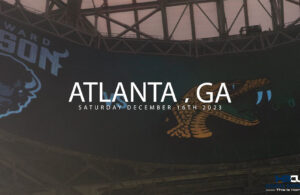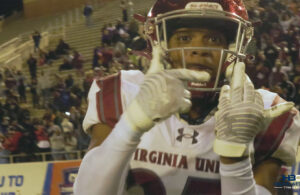
The folks over at ESPN’s ‘Undefeated’ digital platform released their first weekly offering of rankings for HBCU Band programs. Needless to say, there’s been a LOT of talk about the rankings.
First, I want to send kudos to Don Roberts and his team over at The Undefeated for doing what some folks in HBCU circles are afraid to do; create a metric to actually evaluate what we do on the field on a weekly/semi-weekly basis. It’s something that has been the subject of intense debate for years within HBCU bandom.
Can our version of halftime performance art be judged?
Can we establish a yearly hierarchy of who the best programs in the culture are?
Those are questions that have become commonplace for band heads and casual fans alike every year. With that in mind, I want to explore that very concept. Is it possible to create a yearly competition framework for HBCU Marching Bands? With a little bit of cooperation and ingenuity? Absolutely.
A Legacy of Competition
The HBCU Gameday experience is unique. It’s what sets black college football apart. Bands and halftime are a huge part of that competitive experience. For decades on end, HBCU band programs have had competitive rivalries as intense as their athletic counterparts. The ‘Battle of The Bands’ concept isn’t new. The idea of determining who the best programs are, isn’t new, either. The issue that’s often clouded this debate is HOW we determine that value.
More often than not, the question of who the best is (as it pertains to HBCU Marching Bands) has been extremely subjective. There are programs with long and established pedigrees that extend outside our sphere of the craft (FAMU winning the nationally recognized Sudler Trophy is a good example). There are also programs that have established a mainstream footprint for their respective programs that extends decades, there are STILL those programs whose lineage goes all the way back to the birth of the craft as we know it.
Audiences all over the world have enjoyed the spectacle of HBCU marching bands, regardless of lineage, exposure, or amount of visibility for some programs. The question still stands in this day and age, Who is the best? It’s a question that not only deserves an answer every year, but it’s also an opportunity to take the art form that we know and love to new heights. It’s a chance to give audiences the very BEST of what HBCU Bandom has to offer, by setting a standard of evaluation for programs to follow.
How Do We Get There?
There’s the million-dollar question. Within the HBCU band community, there are two schools of thought on this issue; those that favor a competitive framework for the craft, and those that think such a framework is counterproductive to what HBCU bands are. Admittedly, I’m a champion of the former. Competition, implied or otherwise, has been essential to the development of our version of this craft. Competition breeds creativity and innovation.
The rivalries that we see between programs mirror the rivalries that we see in HBCU athletics. In many cases, those rivalries are even more intense than their football counterparts. In a very literal sense, the competitive nature of HBCU Bandom has created a phenomenon that can stand on its own. In doing so, the concept of a seasonal competition could be a boon for the whole of HBCU culture.
Drum Corps International has created a worldwide following with its performance art. Maybe it’s time for innovators within HBCU bandom to push for THAT kind of spotlight on the craft. While the ceiling of such an endeavor would be huge, it’s going to take some outside-of-the-box thinking and objectivity from WITHIN the community for that plateau to be reached.
Whether its’ the blue bloods of HBCU bandom or newer programs like Talladega College, the potential benefits of a competitive framework for a seasonal competition are immense. Increased visibility for HBCU programs and their respective institutions; potential monetary opportunities for schools. There’s a lot to like about the idea of audiences seeing the question (of who’s the best) answered every year. The real question is whether the HBCU band community can put aside apprehension (and in some cases, ego) to actually see the potential of taking the art form in this particular direction.
At the end of the day, bands compete. Some say that they compete against previous versions of themselves; others embrace the mono y mono nature of what game days and fifth quarters are all about. ALL of it encompasses Today’s version of the craft and audiences stand to benefit in a BIG way.
Until Next Entry…
#PreserveTheCraft
#HBCUDigital





You must be logged in to post a comment Login